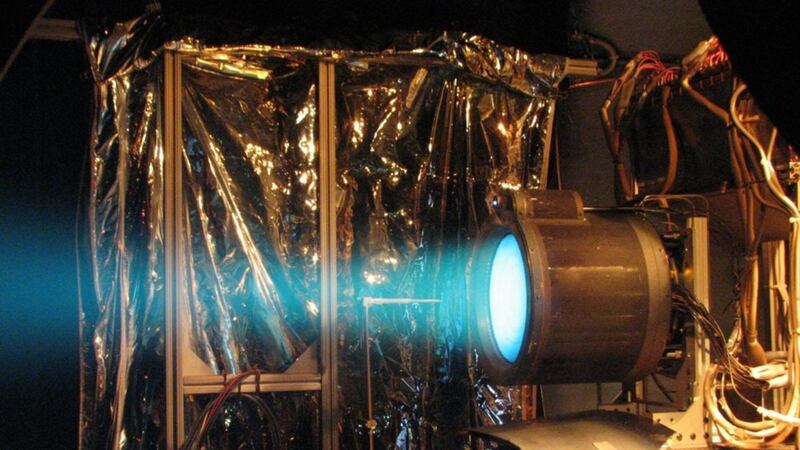BepiColombo will be the first spacecraft to use electrical ion thrusters to travel to another planet.
Four T6 ion engines supplied by British defence and technology company QinetiQ are fitted to the craft’s power unit, the Mercury Transfer Module (MTM).
They work by “ionising” inert xenon gas – knocking an electron off the gas atoms to give them a positive charge.
The resulting “plasma” is attracted by electrostatic forces to a grid with an opposite negative charge and fired out of the thruster at 90,000mph.
Although the force produced is tiny, it can be maintained with high efficiency over a long period of time.
During BepiColombo’s seven-year trip to Mercury its ion thrusters will be operating for 4.5 years.
Two engines will fire at any one time producing 290 millinewtons of thrust, the equivalent of about an ounce of force.
Unusually, the spacecraft will use energy not to speed up but to put the brakes on as it “falls” towards the sun.
It will achieve this both by firing the ion thrusters in the direction of travel, and by means of a complex series of fly-bys past the Earth, Venus and Mercury.
Ion drives have been used before to power Earth orbiting satellites and deep space missions to asteroids.
But BepiColombo is the first interplanetary mission to rely on the technology.
Dr Jerry Bolter, project manager at Airbus Defence and Space in Stevenage, where the MTM was assembled, said: “We recognised very early on that for BepiColumbo to do what we wanted it to do and get from here to Mercury we needed to have a very efficient propulsion system. If we relied on chemical propulsion then we’d need 17 tonnes of propellant.
“The ion drive needs just 581 kilograms of propellant and does the equivalent of 17.8 million miles to the gallon.”
He said the drive unit was “very complicated” involving a lot of intricate computer-controlled electronics to control fuel rates and pressure.








